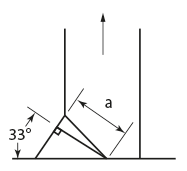Technical
AD 347: Saw cutting of composite slabs to control cracking
The purpose of this AD Note is to discuss the issues involved in the use of saw cutting to form crack inducing joints in composite slabs and to emphasise the risks involved and the care needed in practice. The alternative and strongly preferred method of crack control, by providing appropriate reinforcement, is also discussed.
Modest cracking over beams in composite floor construction is commonplace because of shrinkage and hogging bending of the slab over the supporting beams. For most structures and finishes, the presence of such cracks will not be detrimental to the slab’s performance in terms of durability or serviceability. However, the application of some floor finishes to the slab or the environmental exposure of the surface of the slab may require a greater degree of crack control.
SCI is aware that in practice some contractors achieve crack control in composite slabs by the use of shallow saw cuts to concentrate the strain into one crack, normally along the centre-line of the composite beam. Such saw cutting is traditional practice for ground-supported floor slabs but they do not have to perform the same structural functions as suspended composite slabs, and the technique cannot simply be transferred.
If saw cutting is to be carried out, it should be done with extreme caution, and certainly with reference to the designer, who will ultimately be responsible for the outcome. The principal danger is the risk from cutting the mesh reinforcement, as explained in SCI publication P300, Section 4.2.4, or the risk of damaging the shear connectors. Cutting the reinforcement will reduce the strength of the shear connection and the performance of the slab in the fire condition. Clearly, it is essential to detail and position the reinforcement below the depth of any intended cut, and to ensure that the depth and position of the actual cut is compatible with the actual position and cover to the reinforcement and shear connectors. The cutting process must be accurate and monitored closely.
The cracks induced by cutting will need to be filled using appropriate flexible fillers, to maintain durability and performance in fire. It should also be noted that such crack inducers are not always successful in concentrating the cracking in one location as expected, and that some other random cracking is still possible.
Although this method is high risk, we believe that, provided that the reinforcement is not severed or the shear connectors damaged, the resistance of the shear connectors, the dynamic performance and the diaphragm action will not be impaired by a shallow saw cut or the small crack that it may induce. The reinforcement will prevent the concrete from bursting sideways and will confine the concrete around the stud. Whilst local hogging moments in the slab will still strain the reinforcement in tension and contribute to the crack, they will also compress the concrete around the bottom of the slab, and this confinement is helpful to the stud resistance.
In choosing a location for the cut, there is no ‘ideal’ line and off-setting it from the centre line of the beam could be difficult to set out and might induce cracking on both sides of the beam – so defeating the object.
The preferred method of controlling cracking in composite slabs is by providing an appropriate area of reinforcement transverse to the beam to minimize the crack widths to a level commensurate with the exposure conditions and finishes. The minimum reinforcement area should be 0.2% or 0.4% of the concrete area above the ribs of the decking, for unpropped and propped slabs respectively (advice on this is given in SCI publication P300, Section 4.2.4). Further advice on controlling cracking is given in BS EN 1992-1-1, Section 7.3, where a method is presented for the calculation of crack widths.
In summary, although saw cutting is sometimes used as a means of controlling cracking of composite slabs, there is considerable risk with saw cutting, and the process requires a high level of supervision on site. This method is not recommended and we would advise using reinforcement to control cracking.
This note has been prepared in consultation with The Concrete Society.
Contact: J W Rackham
Tel: 01344 636525
Email: advisory@steel-sci.com












One thought on “AD 347: Saw cutting of composite slabs to control cracking”
Comments are closed.